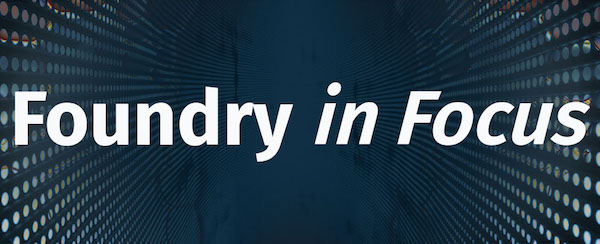
Dear Colleagues,
The federal fiscal year (FY) started this past October, so happy new year to everyone! With the close of FY 2018, it is a good time to review the past year and also look forward to a very promising FY 2019.
By every measure, this last year was a productive one for the Molecular Foundry. Awareness and demand continues to grow with proposal submissions up an impressive 17.5% over last year. Similarly, our outstanding staff supported over 900 onsite users in FY 2018, up nearly 8.5% from the all-time high in 2017. And we’ve never been more scientifically productive: our users and staff produced 375 publications, 38% of which appeared in “high impact” journals according to DOE.
We’ve also been successful in terms of funding. The Foundry received a 3.7% increase in FY 2019, the first time in two decades that DOE’s budget was finalized in time for the start of the fiscal year. This budget certainty enables more effective planning of future programs and initiatives.
In May, I mentioned the $10 million funding opportunity for the five DOE nanocenters for research infrastructure supporting quantum information science (QIS). This past September, the Foundry was awarded two of the seven total DOE QIS awards to the nanocenters. One was for the creation of a “nanofabrication cluster toolset,” or an integrated suite of high-fidelity instruments that will allow users to investigate the fundamental limits of state-of-the-art quantum systems; and the other was for the development of a novel tool combining spin-polarized low-energy electron microscopy (SPLEEM) with electron decoherence interferometry and cryogenic sample environments (down to temperatures of about 4 Kelvin). We look forward to developing these new capabilities and offering them to users interested in this important and growing field.
The combination of budget certainty and our success with these QIS opportunities, as well as some leveraged partnerships, is enabling significant investment in new equipment at the Foundry. Currently, our staff are working on the procurement of nearly $13 million in new equipment, including tools for e-beam lithography, cryo-SPLEEM, integrated nanofabrication deposition and etching, EELS spectroscopy, super-resolution microscopy, atomic layer deposition, single crystal XRD, integrated reactive sputtering and ebeam evaporation, gel permeation chromatography, and next generation direct electron detection. We are also working on upgrades to many of our core capabilities like our MOCVD, compute cluster, JOEL microscope, optical spectroscopy tools, NMR, microfluidics suite, and synthesis infrastructure.
These much-needed investments will reinforce our current capabilities and catalyze new areas of research that have been identified by staff and users as particularly impactful research opportunities. Throughout the year, we welcome your input to help inform our strategic planning and prioritization exercises. One particularly effective way to ensure your voice is heard is to communicate with members of the User Executive Committee (UEC) or even consider running for a spot on the UEC (for more information on the UEC and becoming member, see this link).
Whether through our research, the UEC, or a casual conversation in the hallway, I look forward to hearing from you. Thank you for being a part of this vibrant community and congratulations on a very successful FY 2018!
Best regards,
Jeff

